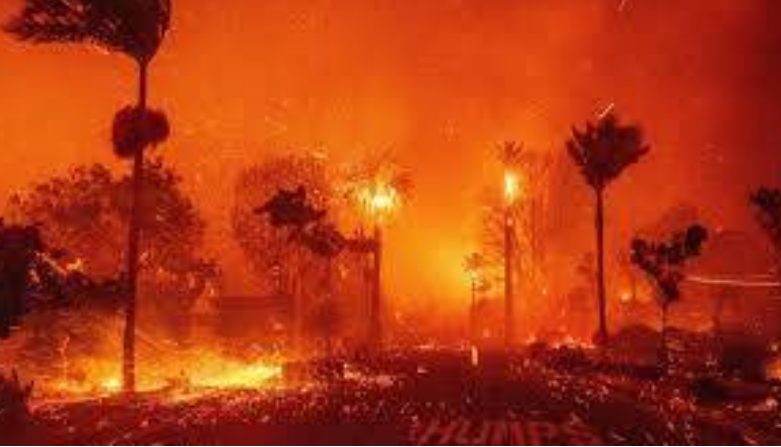Los Angeles (Web Desk): A fierce wildfire broke out north of Los Angeles on Wednesday, rapidly consuming hillsides near Castaic Lake and forcing tens of thousands of people to flee.
The flames spread swiftly, consuming over 9,400 acres in just hours, driven by the dry, powerful winds known as Santa Anas.
These winds swept the fire’s smoke and embers across the area, creating a tense atmosphere as evacuation orders were given for about 31,000 residents near the lake, located about 56 kilometers from Los Angeles and near Santa Clarita.
For many, this latest fire comes as a fresh shock after the devastation caused by two massive blazes earlier, which claimed over two dozen lives and caused billions in damages.
As the region recovers, President Donald Trump stoked controversy by repeating false claims about California’s water management.
In an interview, he suggested that the state was misdirecting water, and threatened to withhold federal funds unless changes were made. In reality, Los Angeles's water supply comes from separate aqueducts, not from the areas impacted by the fires.
As the fire raged, over 4,000 firefighters, aided by aircraft and bulldozers, worked around the clock to control the blaze.
Los Angeles County Fire Chief Anthony Marrone expressed cautious optimism, saying they were making progress despite the challenges posed by the fire's rapid spread.
Firefighters continued to work into the night, using aircraft to drop water and fire retardant, while ground crews attacked the fire from multiple fronts.
In addition to residents, around 500 inmates from the nearby Pitchess Detention Center were relocated as the fire threatened the area. Other local jails remained under evacuation orders, with buses ready to move prisoners if the situation worsened.
The I5 freeway, a crucial highway, was temporarily shut down, causing significant traffic jams as it reopened later in the day.
Experts explained that the fire's swift growth was the result of a combination of dry conditions, low humidity, and strong winds, which together made it especially hard to contain.
With Southern California’s drought-like conditions and little rainfall in months, the region’s landscape was already tinder-dry, amplifying the fire's spread.
Despite the efforts to tame the blaze, the situation remained fluid, and the winds were expected to continue through the night, keeping fire crews on edge.
The dire circumstances and the ongoing climate challenges facing the region have only highlighted the broader issues of environmental change, leaving many wondering how the future will unfold in the face of increasingly extreme conditions.


